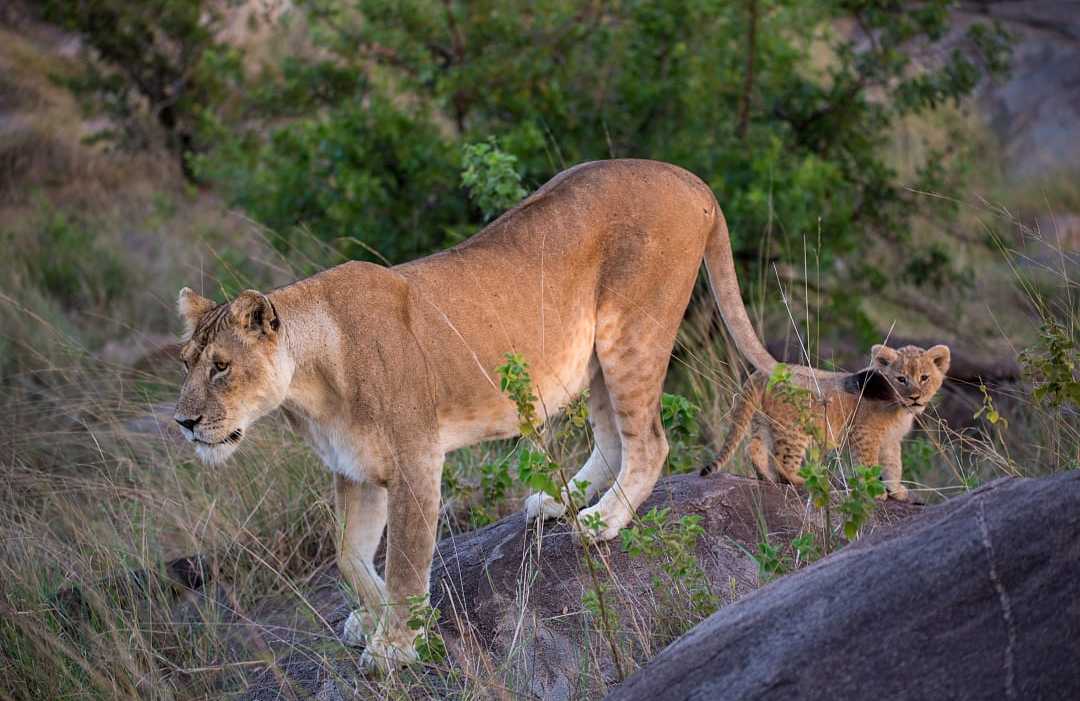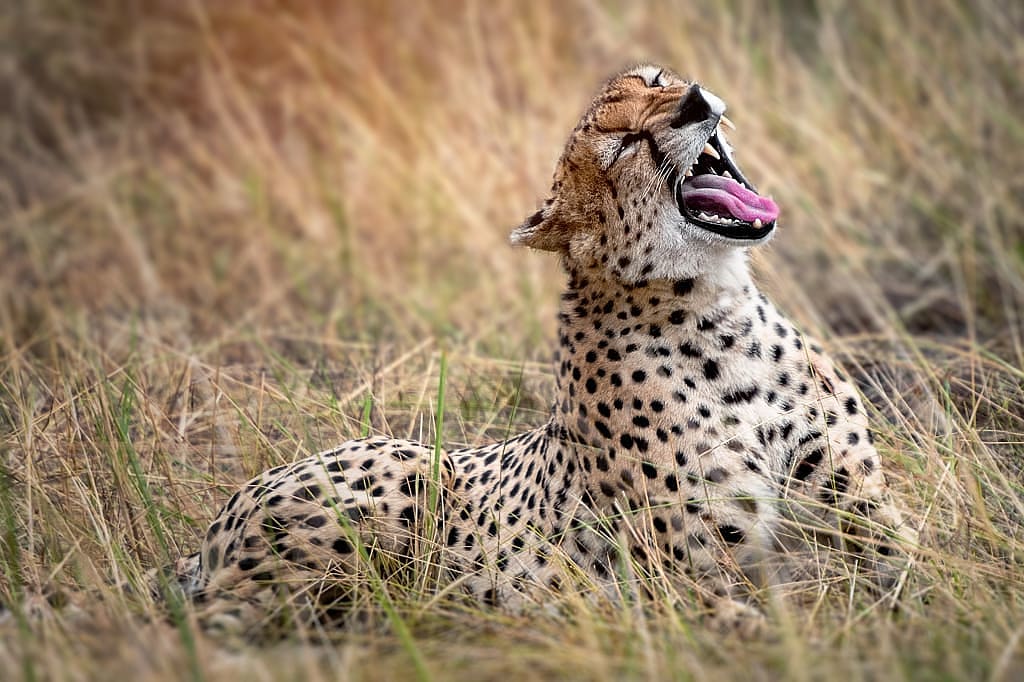As the most famous of Africa’s large predators, the lion is a quintessential symbol of the wild. Nothing can truly prepare you for seeing one in its natural habitat; they are bigger, broader, and more powerful than most anticipate, yet move with a grace that belies their strength. Whether you spot a lone male surveying his territory from a rocky outcrop or happen upon a pride resting in the shade, an encounter with a lion is a moment you will never forget.
- Social Structure: Lions are the only cats to live in social groups, known as prides, which typically consist of related females and their offspring.
- Apex Predators: As formidable hunters, they often work together to take down large prey like wildebeest, zebra, and Cape buffalo.
- Impressive Size: Adult males can weigh up to 500 pounds and are distinguished by their iconic manes, which signal health and virility.
- Daytime Loungers: Lions are most active at dawn and dusk, often spending up to 20 hours a day resting to conserve energy.
- Powerful Roar: A male lion's roar is used to communicate and establish territory. It can be heard up to five miles away.
Where to See Them
- Serengeti National Park
- Ngorongoro Crater
- Lake Manyara National Park
- Nyerere National Park
- Ruaha National Park
- Tarangire National Park
Find your own regal encounter with our sample itinerary, Mufasa-Inspired Family Lion King Safari.























